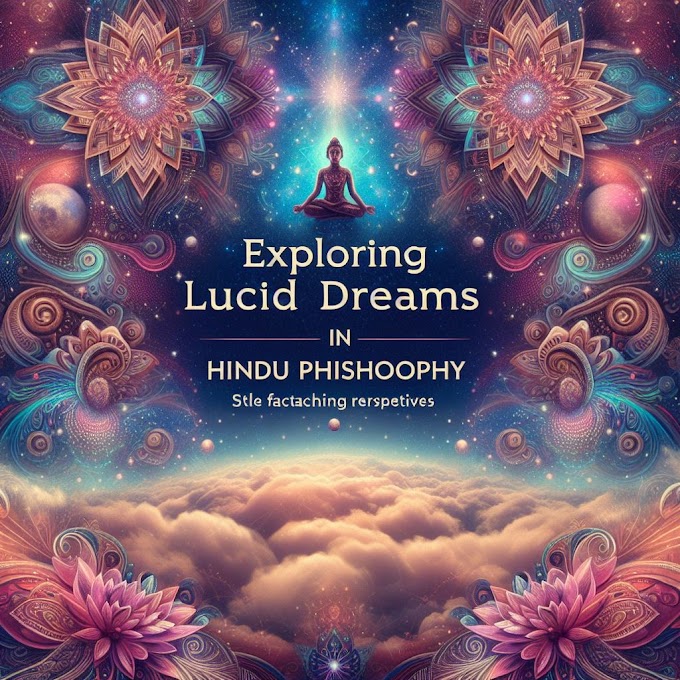Listen to this article
Are you searching on the internet about Lucid Dreaming for Beginners? If yes then you came on the perfect platform.
What is a Lucid Dream?
- Vision
- Action
- Dream
- Death
The mother tantra says that if one is not conscious of the vision, one is unlikely to be in the behavior.
If one is not conscious in behavior, one is unlikely to be conscious in sleep. And if one is unconscious while asleep(Lucid Dream), one is unlikely to be conscious in the bardo after death.
The Tibetan Yogas of dream and sleep | Bardo | Dream Yoga for Beginners | Eastern Lucid Dream
What does that mean? "Seeing" in this context does not simply mean visual phenomena, but the totality of the experience.
It includes all mental and emotional perceptions, sensations, and events, as well as everything that appears to us externally. Vision is what we "see" as experience; it is our experience.
Being unconscious in the vision means not being able to see the truth of what is arising in the experience, and instead being deluded by the misconceptions of the dualistic mind, confusing that mind's projections and fantasies with the confusing reality.
When we are unaware of the true situation in which we find ourselves, it is difficult to respond skillfully to what we find in our outer and inner life. Instead, we react according to karmic habits of attachment and aversion, driven in one way or another by unhappiness and illusory hopes.
Acting on this confusion is what is meant by behavioral ignorance. The result of such an action is the intensification of attachment, hatred, and ignorance and the creation of more than negative karmic imprints.
Lucid Dream for Beginners
This is “not being conscious in the dream. The dream phenomena we encounter will evoke in us the same dualistic emotions and responses that we lose ourselves in when awake, and it will be difficult to develop clarity or engage in subsequent practices.
We enter the bardo, the intermediate state after death, just as we enter sleep after falling asleep. When our dream experience lacks clarity and involves confusing emotional states and habitual reactivity, we have trained ourselves to experience the processes of death in the same way.
We are propelled into further karmic attachments by dualistic responses to in-between-state visions, and our future rebirth is determined by the karmic tendencies we have cultivated in our lives.
This is a “lack of consciousness" in the bardo. In contrast, if we continuously direct our attention to the immediate moment of experience, this ability will soon be found in sleep. When we cultivate presence while we sleep, we prepare for death. Dream practice correlates with this progression.
In order to progress, we must develop certain stability of mind so that we can maintain greater awareness of experience and "seeing" and develop skillful responses. So the first practice is keeping still (zhiné), which trains the mind to be calm, focused, and alert.
As we bring greater awareness to the experience, we can overcome habitual responses based on the delusions of the conventional mind.
The four foundational practices encourage this flexibility by training the mind to use any object of waking experience as a cause for heightened awareness and presence.
When we loosen the grip of karmic reactivity, we can choose to act positively. This brings awareness to the behavior.
The consciousness that we have stabilized and manifested in our behavior during the waking experience begins to emerge naturally during sleep. The primary practices use an understanding of prana, the chakras, and the mind to support this awareness-raising during sleep.
 |
| Lucid Dreaming for Beginners |
They are performed before falling asleep and during three waking periods during the night. Once clarity is developed, there are more exercises during the dream itself to develop the flexibility of the mind to break through the limitations and misconceptions that bind us to samsara.
Just as cultivated clarity and presence are carried into sleep in waking life, so in sleep cultivated clarity and presence are carried into death.
When one has fully attained the Lucid Dream, one is ready to enter the intermediate state after death with the proper vision and stability in the non-dual presence necessary to attain liberation.
This is the sequence: awareness in the first moment of experience, in response, in sleep, and then in death. You can't start from the end. You can determine how mature your practice is: examine your feelings and your reactions to feelings as you encounter the phenomena of experience.
Are you controlled by your interactions with the objects of experience, or do you control your responses to them?
Do you translate your attraction and dislike into emotional responses or are you able to maintain a constant presence in different situations? If it is the former, the practice will cultivate the presence necessary to free you from karmic conditioning and reactivity.
If the latter is the case, you will develop more and more stability of consciousness and your dreams will change dramatically.
Final Thoughts:
The type of awareness you practice during your waking time, the same type of awareness will be carried in dreams. If you continuously practice consciousness in the daytime, the same consciousness can be found in dreams and the bardo after death.
So, this much for today. Till then keep practicing, and be alert. Who knows, maybe you are in a dream now.

.png)

.png)







